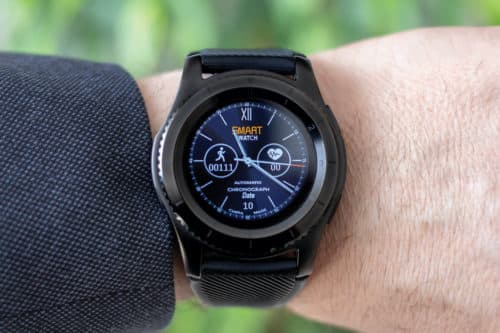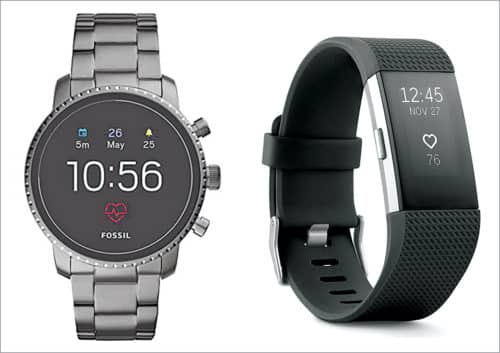Wearables are the most convenient tools to collect health data, and monitor and interact with users on-the-go. Smartwatches and activity trackers can remind when a routine task has been missed or left undone. These also promote healthy lifestyles and assist in healthcare wherever and whenever required.
Sensors in smartwatches and wristbands collect data and use AI algorithms to analyse activities in real time. AI algorithms can classify data, such as normal or irregular heartbeat, and help doctors interpret results in real time or later at convenience. This data is analysed using machine learning (ML).
These devices do not require a set of powerful CPUs and GPUs to carry out ML tasks. The data is analysed and compared using bit arrays, which tremendously reduces memory usage.
ML relies on algorithms, superfast hardware and a huge amount of data for accurate answers. The whole purpose of ML is to allow a software-run machine to recognise what a user is currently doing, while at the same time offer information or an experience that is relevant to the current situation.

Features to look for
A smartwatch should be compatible with Android and iOS smartphones, specifically with Android OS 4.4+ or iOS 9.3+. Storage should be 4GB or more, and memory 1GB or more. Operating system can be Wear OS by Google. It must have sensors like accelerometer, altimeter, ambient light, gyroscope, heart rate, microphone, NFC and untethered GPS.
It must have Bluetooth 4.2 Low Energy (BLE) and Wi-Fi 802.11 b/g/n connectivity. Battery life should ideally be 24-plus hours with a rapid charging option and a good processor. Other basic features you may look out for are heartrate tracking, GPS to track commute distance, waterproofing, notifications, personalised dialing, music, interchangeable straps and so on.
A smartwatch uses Bluetooth technology to connect to a phone. A gentle buzz lets the wearer know right away whenever there is a notification, including text, email, social media, app alerts, alarm clock, calendar alerts and the like.
The watch should function well in any temperature with a touchscreen command. The Activity-tracking feature enables tracking of steps, distance and calories burned. A customisable dial adds good aesthetics, and custom goal tracking increases usability.
To avoid damage to the watch, only the included charger should be used. The smartwatch should be kept more than twenty centimetres away from implanted medical devices to minimise RF interference.
Fitness band versus smartwatch
A fitness tracker measures only the various aspects of fitness, including heartrate, calories burned, distance covered and sometimes sleep quality. So, for a fitness-focused individual, a dedicated fitness tracker shall suffice.
A fitness tracker feeds distance and exercise data into an app to give insight into overall health and progress. Some trackers also display time and notifications from the phone, similar to smartwatches; but these have smaller screens and are simply built compared to smartwatches.
A smart fitness tracker is compact and gives detailed information about the body, both while at rest and when exercising. Rather than giving loads of detail on a screen, it connects to a phone or computer, and lets the user see the progress, time, distance and other information about the workout. It can also be used to check improvements.

A smartwatch has a processor and touchscreen for the watch face. The user can download new faces to alter the appearance of the touchscreen.
Unlike a regular watch, a smartwatch can tell more than just time. It can track fitness and also send alerts about text messages, emails, notifications, timers, alarms, calls (some may even allow picking the call) and time. It also tracks running routes with GPS, controls music, sets fitness goals, monitors sleeping time and watches the heartrate.
A smartwatch has health-monitoring apps and various tracking capabilities for fitness purposes. But these are in addition to the main communication function that these offer.
A smartwatch may be able to receive notifications on some devices, but these features are not the most prominent in a fitness tracker.
Some smartwatches let the users view and respond to notifications, dictate text or email responses, or send smart replies, along with fitness and activity tracking. Wear OS by Google includes a host of features that could narrow the gap between functionality of fitness trackers and smartwatches. Wear OS devices allow adding apps directly to the smartwatch, and using any Bluetooth or Wi-Fi connection to perform a lot of functions independently.
More advanced devices support multi-sport tracking or exercise, such as running, cycling, swimming or golf.
Smartwatches are built for communication while fitness trackers are built for monitoring and data gathering. Both can help measure and assess health progress and keep the user motivated at the same time. Both devices may also offer similar tracking and data collection functions with a touchscreen for interface.
The technology behind a smartwatch or fitness tracker is great, but the ultimate goal is a better you. You still need to get out and run, exercise and go for walks. If a fitness tracker or smartwatch helps you achieve your goals, remind you of your daily tasks and track your health, then it is a smart investment.






